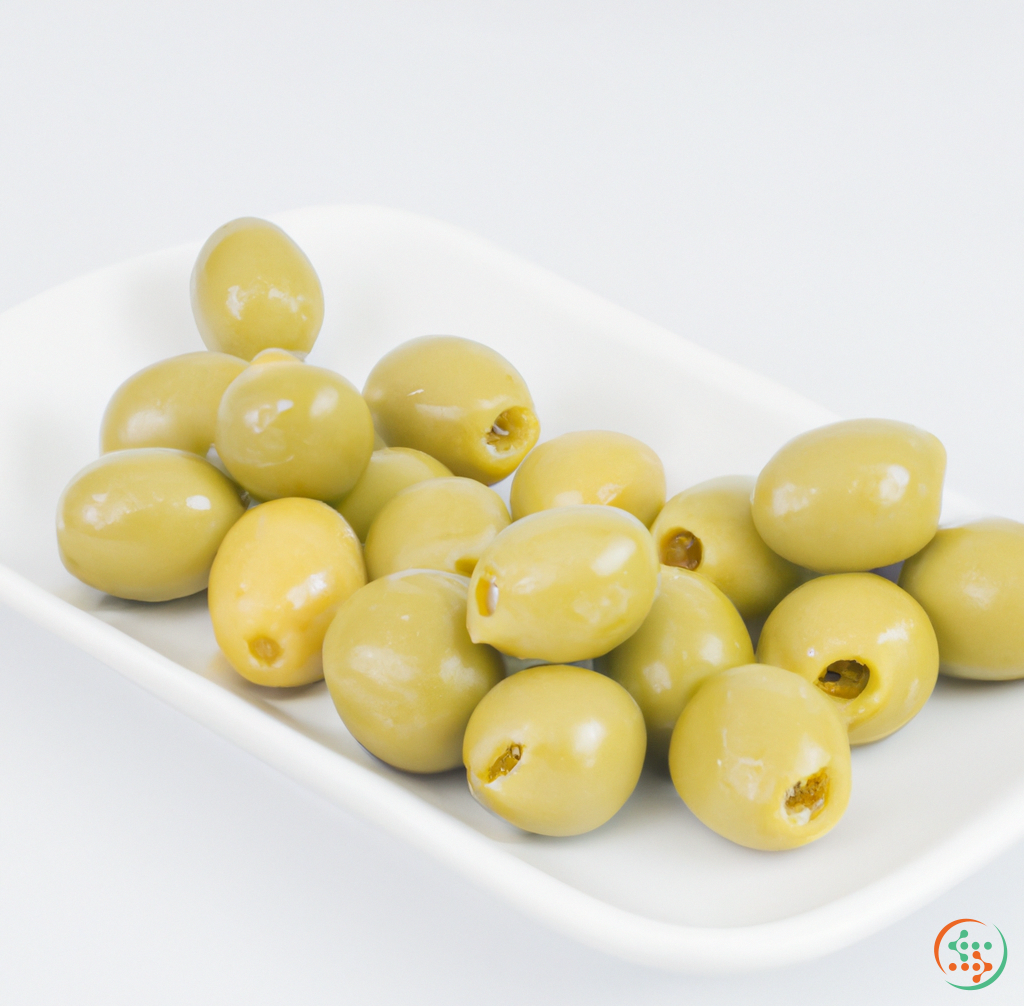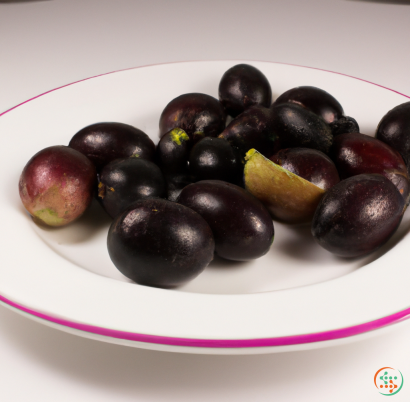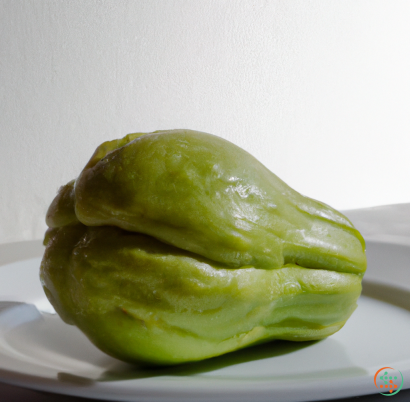Green Olives
Green olives are a delicious fruit that adds flavor and texture to many culinary dishes. Not only can they provide an exquisite addition to the plate, they can also be beneficial to overall health. The green olive derives its color from the unripened state of the fruit and can range in shades depending on the origin and type. Generally, they are firm and slightly bitter, although some may appear slightly softer or sweeter.
Olives come from a species of small tree known as Olea Europaea which grows in temperate regions of the Mediterranean. Depending on the cultivar, olives may also be grown in specific regions of the United States. Green olives are harvested before the fruit is completely ripened, so it can be processed for consumption.
They have a number of health benefits that make them a preferred snack and ingredient. Their high antioxidant content can help protect the cells from free radical damage. They have also been linked to lower cholesterol levels and better heart health. Studies show that consuming olives can reduce the risk of certain types of cancer like prostate cancer. Another benefit is that it contains a fatty acid known as oleic acid which is thought to have anti-inflammatory properties.
Green olives can be eaten raw or as part of a dish. They are commonly available at grocery stores, though some specialty stores may sell varieties only available in-store. One of the simplest ways to prepare them is to stuff the olives with garlic, herbs, lemon, or other seasonings. They can also be roasted, marinated, mixed into salads, or even added to sauces, pastas, and pizzas. The possibilities are endless!
One thing to note is that green olives are quite salty, so they should be served alongside starchy side dishes such as potatoes, pasta, or breads to balance out the flavors. The olive brine they are stored in can contain a good amount of salt, so it’s important to rinse them before serving to remove some of the excess sodium.
Green olives have an interesting history and can be found mentioned in ancient Greek and Roman texts. They were primarily used as a garnish for popular dishes, though their delicate flavor also lent itself well for use in sauces and broths. Today, they are a dietary staple across the Mediterranean region and beyond.
As with any food, it’s important to choose green olives from reputable vendors. Be sure to check the label for details on the methods of storage, farming, and harvesting. When possible, opt for organic varieties. Look for olives that are firm to the touch and unified in color. Avoid any with soft or mushy spots or wrinkled skins - these might be signs of age.
Whether used as a snack, or as an ingredient, green olives offer a robust flavor that really ups the ante when it comes to flavor and nutrition. They are easy to find, economical, and easy to prepare. So next time you are looking for an interesting and flavorful addition to your plate, don’t forget about the beautiful green Olive.
The Journey from Green Olive Tree to Dinner Plate
Olive oil is one of the world’s most widely used and beloved ingredients, providing flavor, nutrition and culinary pleasure. But how do those olives get from a tree to the dinner plate? Understanding the process of creating and distributing green olives can be a fascinating and informative exploration.
Growing
Green olives are most commonly found on the Mediterranean coast and growing them can be done in just a few simple steps. The seedlings of olive trees are planted at the beginning of March in nursery beds in light soil or sand, around two feet below the surface. They aren’t ready to be transplanted until they’re at least one year old, when they can be moved to a more permanent location. In some areas, this process is done by hand and can greatly reduce the harvest yield.
Once planted, olives need about 8-10 years to begin bearing fruit, after fertilization occurs and the first small fruits appear. Because olive trees can last for centuries and don’t need to be replaced very often, farmers often plant them as far away from traditional agricultural fields as possible -- allowing for more biodiversity and preservation of the trees.
Harvesting
The harvesting of olives is a laborious process and can be done in different ways. Green olives are ready to be picked in late Fall, when the fruits are still green and they’re at their highest natural sugar levels. Harvesting is mostly done manually, with some farmers employing technology such as vibrating vibrators to speed up the process, though this technique has been shown to cause extra damage to the trees – though it can reduce costs.
The olives are carefully removed one at a time until they’re all off the tree. They’re then stuck in burlap sacks and transported to the press or farmhouse; or, in many cases, directly to the nearby olives press. Here, the green olives are washed, sorted and, depending on the variety, either pressed for olive oil or marinated for a sweeter pickled olive. Olives can also be dried to create a firmer texture and stronger flavor.
Processing
Now that the green olives have been harvested and cleaned, they can go through the processing stage. This starts with a laborious debittering process. Green olives contain a bitter compound called oleuropein, and it needs to be removed before the olives are edible. Different methods are used for this, such as soaking in saltwater, soda baths, and even lye.
Once this is done, the olives can be canned and pasteurized. This helps preserve them and extend their shelf life. Pasteurization kills off any bacteria and molds that may have contaminated the olives while they were being stored, ensuring they’re safe to eat. The olives are then sealed in cans or plastic jars and labeled with their expiration date and other pertinent information.
Distribution
Finally, the green olives are ready for distribution and sale. There are various ways this can be done, but the most common is through warehouses and distributors that sell worldwide. These companies usually keep the olives in a climate-controlled setting and ship them to grocery stores, restaurants, and other vendors around the world.
When green olives arrive at the destination, they’re stored in dark, cool places, such as pantries and shelves to preserve their quality and flavor. This helps ensure they’re as fresh and delicious as when they were harvested. After they’re selected by their customers, they’re usually taken home and either served immediately, or prepared according to the desired recipe.
Enjoyment
As you can see, there’s a long and complex journey from green olive tree to dinner plate. The process starts with nurturing and caring for the plants, followed by harvesting and processing the olives. The final step is distribution, so that people all around the world can enjoy them as part of their meals. Whether as an olive oil, a component of many dishes, or just a simple snack, green olives are the tasty result of an intricate process.
| Vitamin A | 0.02 mg | |
| Beta-Carotene | 0.231 mg | |
| Vitamin E | 0.00381 grams | |
| Vitamin K | 0.0014 mg | |
| Vitamin B1 | 0.02 mg | |
| Vitamin B2 | 0.01 mg | |
| Vitamin B3 | 0.24 mg | |
| Vitamin B4 | 0.0142 grams | |
| Vitamin B5 | 0.02 mg | |
| Vitamin B6 | 0.03 mg | |
| Vitamin B9 | 0.003 mg |
| Calcium | 0.052 grams |
Daily Value 1.3 g
|
| Iron | 0.49 mg |
Daily Value 0.018 g
|
| Magnesium | 0.011 grams |
Daily Value 0.4 g
|
| Phosphorus | 0.004 grams |
Daily Value 1.25 g
|
| Potassium | 0.042 grams |
Daily Value 4.7 g
|
| Sodium | 1.556 grams |
Daily Value 2.3 g
|
| Zinc | 0.04 mg |
Daily Value 0.011 g
|
| Copper | 0.12 mg |
Daily Value 0.9 mg
|
| Selenium | 0.9 ug |
Daily Value 0.055 mg
|
| Total Sugars | 0.131141 grams |
per 100g
|
| Palmitic acid (16:0) | 1.69 grams |
|
| Stearic acid (18:0) | 0.34 grams |
|
| Total Saturated fatty acids: | 2.03 g | |
| Oleic acid (18:1) | 11.14 grams |
|
| Palmitoleic acid (16:1) | 0.12 grams |
|
| Gadoleic acid (20:1) | 0.05 grams |
|
| Total Monounsaturated fatty acids: | 11.31 g | |
| Linolenic acid (18:3) | 0.09 grams |
|
| Linoleic acid (18:2) | 1.22 grams |
|
| Total Polyunsaturated fatty acids: | 1.31 g | |







